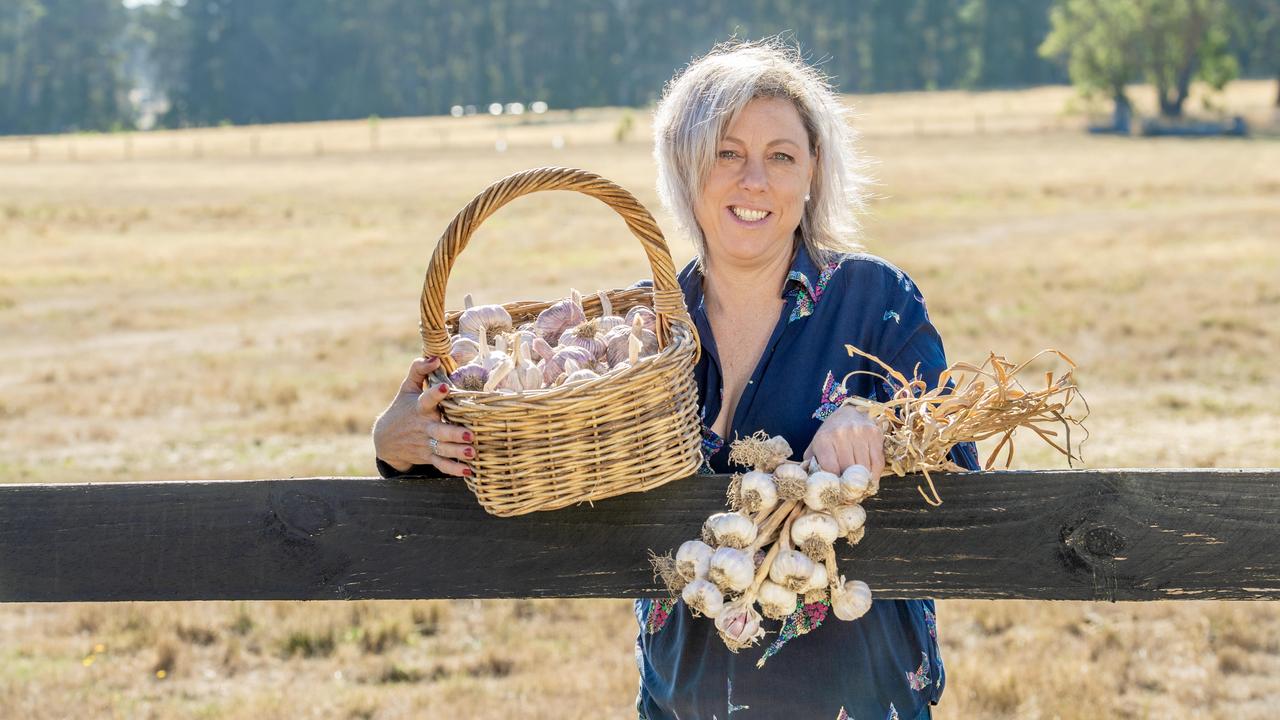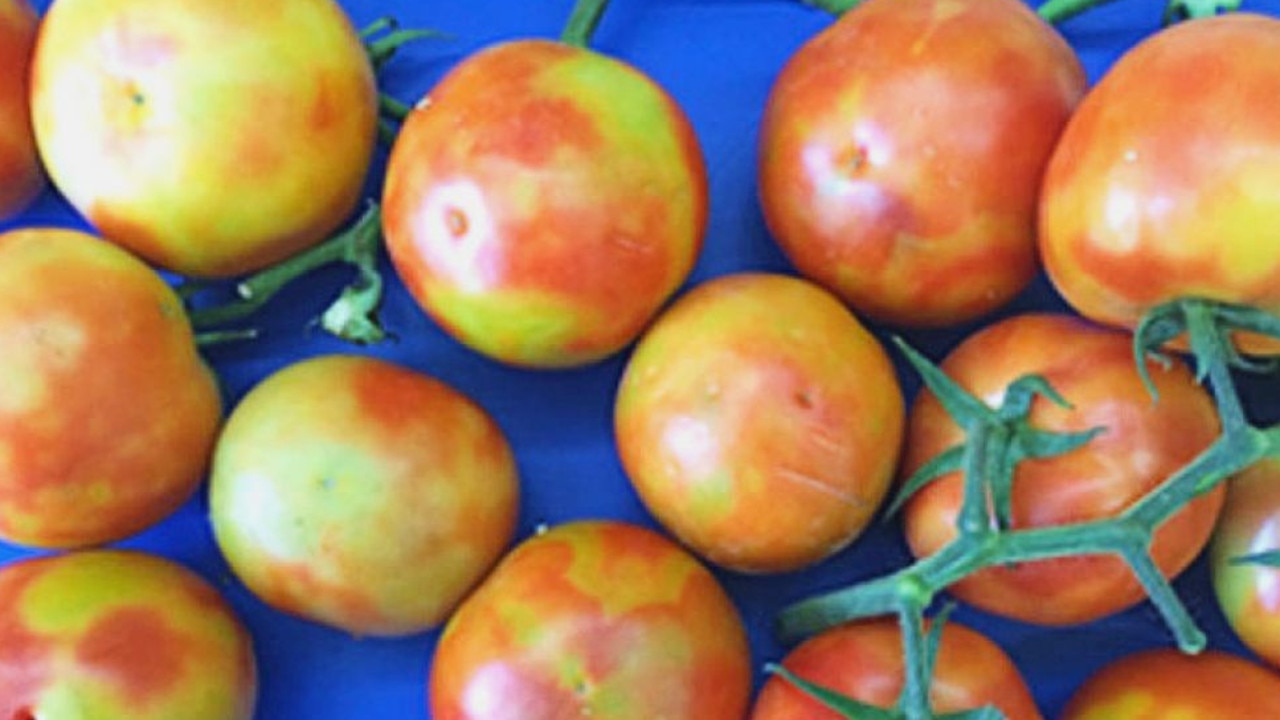Young potato growers chipping away at Tocumwal
Water security and price volatility are the main drivers of profit and loss for horticulture producers Hannah and Tom Kelly.
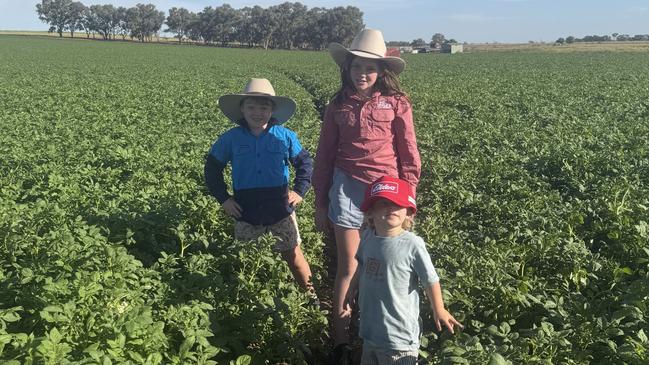
Having a clear budget and locking in their water when they can is the key to Hannah and Tom Kelly’s successful horticulture business.
Hannah and Tom grow crisping potatoes across two properties at Tocumwal and Savernake in the NSW Riverina.
Hannah’s parents, John and Maree Doyle started growing potatoes at Berrigan 38 years ago, so when the couple moved back to the area 10 years ago, it was a natural fit to look for properties with potato-growing potential.
“We leased a couple of farms initially and pivot sites with the right soil types, then we acquired a 500 tonne potato contract from a retiring farmer next door and started from there,” Hannah said.
“We also took on winter delivering contracts, which are more expensive to grow and the yields are less, but it got us in the door.”
GROWING UP
Hannah and Tom then purchased their first property at Tocumwal, which was 307ha, eight years ago, from Hannah’s family, they then purchased a 296ha property at Savernake four years ago and have just agreed to buy the neighbouring 202ha property at Savernake.
“We have been looking to expand, we wanted land that already had pivot irrigation set up. The new property will improve our potato rotation.”
Across the properties and leased land they grow 300ha of potatoes each year to supply to Snack Brands Australia, which includes brands such as Thins, Kettle and the Natural Chip Company.
They also grow a cover crops of wheat, canola, mustard, radish and sorghum. However, 90 per cent of their income is from potatoes.
Potatoes are delivered over a six month period with a summer crop and winter crop grown.
The summer crop is planted from August and harvested between December and March, while the winter crop is planted in December and January, and harvested in May, June and July. Potato seed is grown in cooler climates and delivered from March to July.
The Kelly’s grow seven different varieties of crisping potatoes. The varieties have different attributes that are suited to the different growing conditions over the season.
Tom said they all had different jobs and helped to meet the correct specifications needed by the snack company.
The potatoes are sorted and graded on-farm, with a test batch sent to the factory before a new seed variety or field is started for harvest.
“The most important thing is getting the product right. If it is not right, it isn’t worth anything, unlike wheat for example where a downgrade may just mean a small reduction in price,” Tom said.
And if there is any waste it is taken to a local dairy farmer.
Tom said the “right” crisping potatoes had to have a high specific gravity, size and colour once cooked. They are also graded for external and internal defects.
WATER SUPPLY
In the southern Riverina Potatoes are grown under pivot irrigation in sandy soils
Soil moisture probes are used and the centre pivots are automated with section control.
However, they are in the process of upgrading to variable rate pivots.
For Hannah and Tom water security is their main driver of profit and production.
“We currently have whole sections we can turn on and off, but the new variable rate pivots can water a couple of square metres, so it can be really targeted,” Tom said.
This means water savings and more targeted applications.
Irrigation scheduling is done with the help of readings from the soil moisture probes.
Dry fertiliser application is done via ground rig and plane. Variable rate is used where applicable. Liquid fertiliser is applied through the pivots and also by ground rig.
“We have to do lots of small applications of fertiliser with sandy soil types that are prone to leaching and run off.”
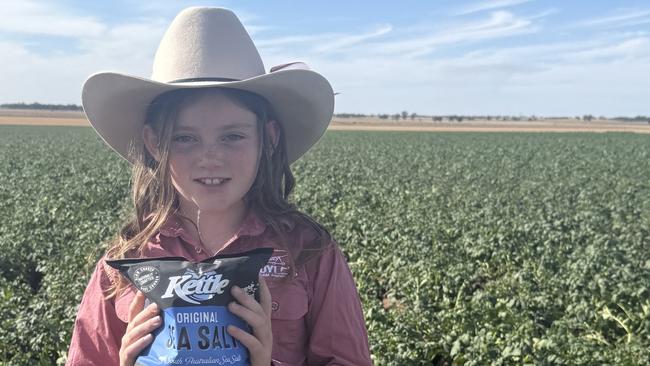
WATER SECURITY
Hannah said potatoes needed 5-7 megalitres/ha of water per to grow, the difference is the time of year the crop is grown and rainfall.
“We have a mix of NSW general water entitlements and lease parcels of Victorian entitlements and will also buy water on the temporary market, and use carryover ” she said.
Having the different types of water entitlements locked in means they know their water cost and can minimize volatility in availability and price of water in low allocation years.
“We learnt a big lesson in 2018-19 when all of a sudden there was little water allocation and we had already signed contracts to supply potatoes.”
This season the water cost was at about $107 a megalitre, plus fees and charges, which they could then budget on a price with Snackbrands.
“Water security and price volatility is our main driver of profit and loss,” Hannah said.
“We also want to be seen as a constant and reliable business. We hope to not limit our supply because of water.”
When looking at property, she said their next purchase will be a block with a bore to use in low water allocation years.
Tom said water was also the reason they started growing potatoes.
“The return per megalitre is higher than other crops, like rice, corn, cotton, we could grow in the area.”
Hannah’s sophisticated budgeting system helps with knowing they have enough water for the crop ahead.
“I have a budget out to 2030 and I look at and use it every day,” she said.
“I look at our costs every day so we can look ahead and know what we have to do to cover our costs in one, two or five years, and also work backwards to know what we need now to have increased production in three years.”
“Also we need a lot of machinery and equipment to grow and harvest potatoes. At the moment we do have a high amount of finance repayments. I need to make sure these repayments don’t cause too much stress on our working capital.”
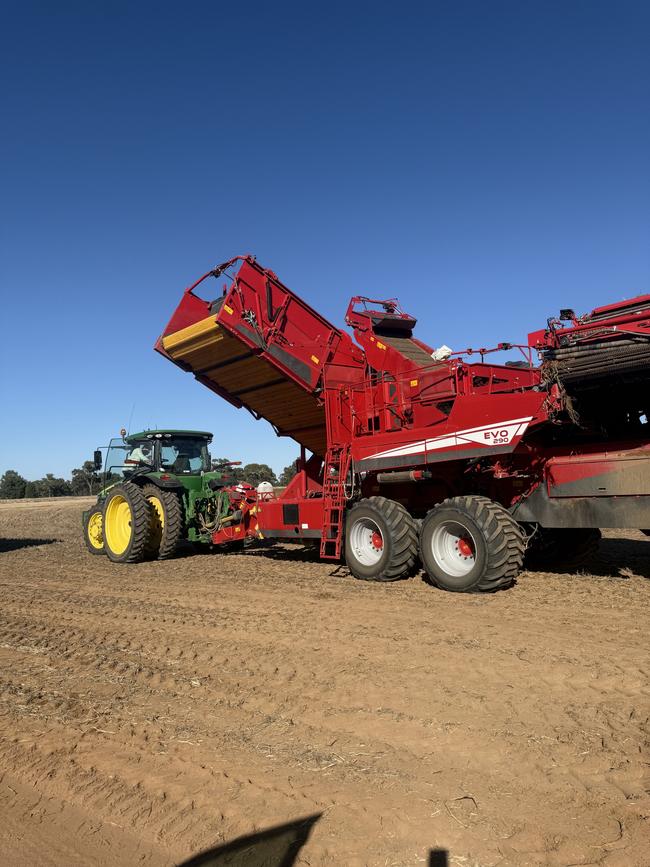
FINER DETAILS
Soil tests are undertaken every year with Predicta Pt DNA soil tests. Tom said they could then allocate the right fertiliser and rotation for each field.
Crops were scouted every week to monitor beneficial and pest insects and targeted insecticides are sometimes used however Tom said they have found beneficial bugs take care of 80-90 per cent of problems.
Tom said the potato industry in NSW is relatively small, and the growing conditions are so different to main potato growing areas.
“The agronomy solutions are limited which means there is lots of trial and error. John, Hannah’s father, has been the most important source of knowledge with his over 40 years of experience in the industry.”
Weeds are not a huge issue because the weeds are different in the summer and winter crop we can rotate out of problem fields.
The cover crops use up remaining soil moisture and provide competition which also suppresses weeds.
“There is no way around not ploughing when harvesting or planting potatoes, so that helps control weeds as well.”
Harvest is done by a two row harvester which unloads into belt bottom trailers which take the potatoes back to the packing shed where they are sorted, graded and loaded into bulk trucks and taken straight to the processing factory in Sydney. More often than not they are made into chips later that day.
They employ three full time staff. Jonny, Dave and Daniel and an additional five to seven staff during harvest.
“This season has been our best in regards to increased production and organisation. It’s a real credit to our staff and local contractors,” Tom said.
LONG TERM
In terms of the future, Hannah said they had been needing more land for a while so now will focus on improving their potato rotation and upgrading equipment in the packing shed
“We are very aware of how we got to this point, we have had lots of help with machinery, leasing land, knowledge and advice. We are conscious of paying this kindness forward when we can.”




